
Table of Contents
Product test results
Numbers in parenthesis (#) are the number of individual samples making up the average.
Primary Engine Variables (AFR, Boost, Timing)
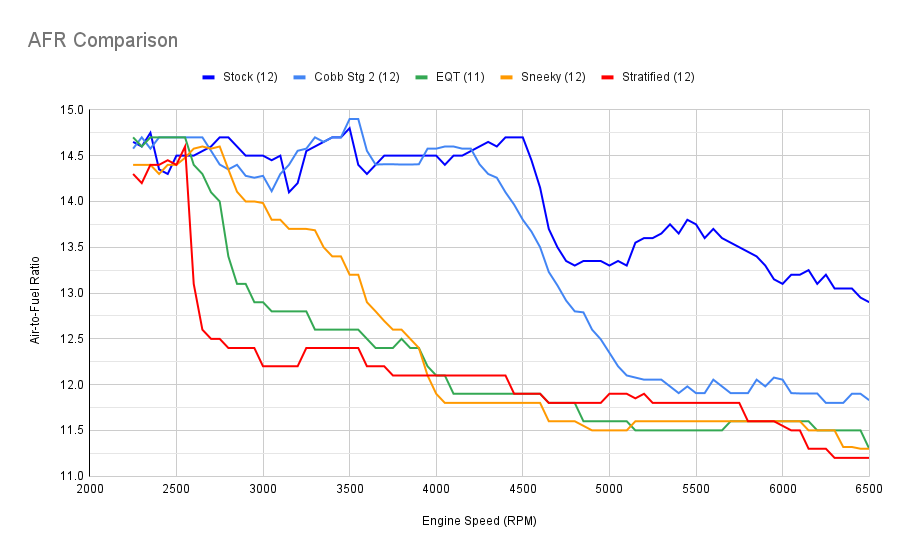
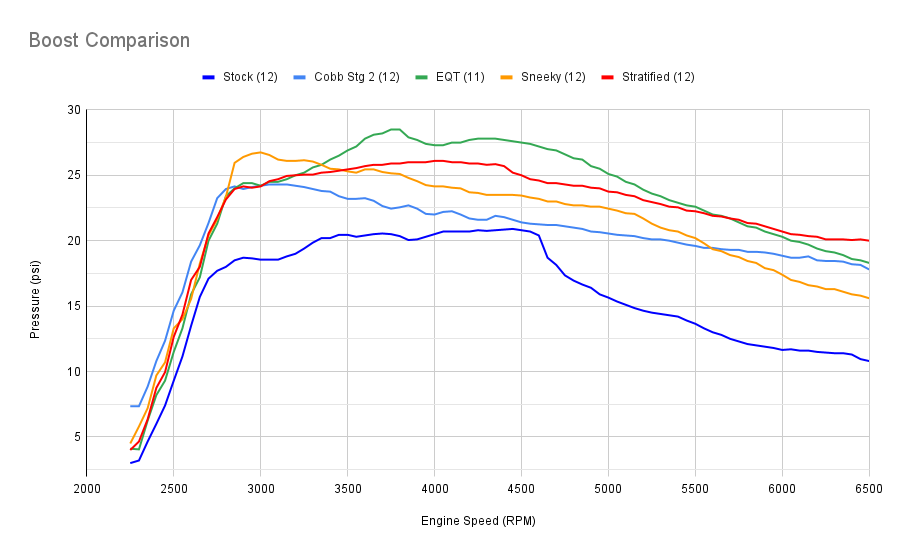

Vehicle Measures (Power, Longitudinal Acceleration, Acceleration Time, Throttle Response)
Virtual Dyno calculated Peak WHP based on vehicle street acceleration.

Longitudinal Acceleration at full throttle shows how quickly the car is accelerating and should relate to the sensation of being pushed back into the seat.

Dragy measured acceleration times over the custom speed range (47-84 mph)

Here Longitudinal Acceleration addresses Throttle Response. It shows how quickly the car accelerates for a given amount of accelerator pedal depression.
Secondary Engine Variables (Noise Signal/Timing Retard, Intake Cam Position)
This section introduces the engine Noise Signal, information unavailable from Cobb tunes logged with an Accessport.
Note: View this page for an in-depth explanation of how the Noise Signal is utilized.
TLDR the in-depth discussion, the noise signal is evaluated to predict potential knock (detonation).
Detonation is caused by too much cylinder pressure, and that could be caused by a number of things. It’s usually too much of things you think are good. Too much boost pressure, too much ignition advance, those are the main causes of detonation that we’ve seen.
MotoIQ – 3 Ways to Prevent Your Engine from Blowing Up!
The key takeaway here is that knock is an engine killer and detecting it by way of a knock sensor mounted to the block is crucial as it allows the ECU to employ safety strategies when required.
High Performance Academy – Knock Sensor Lesson
Knock Retard / Timing Reduction is something that the Cobb Accessport reports, but this value does not necessarily correlate with Knock Activity.
In this first example, an OEM-like Knock Threshold is shown.
The Noise Signal (Blue line) from the knock sensor spikes above the Knock Threshold (Red line), and the ECU reacts to the potential Knock Event by reducing Ignition Timing (Knock Retard) (Cyan line), and the Accessport reports a value for Ignition Timing Retard on Cylinder #1.
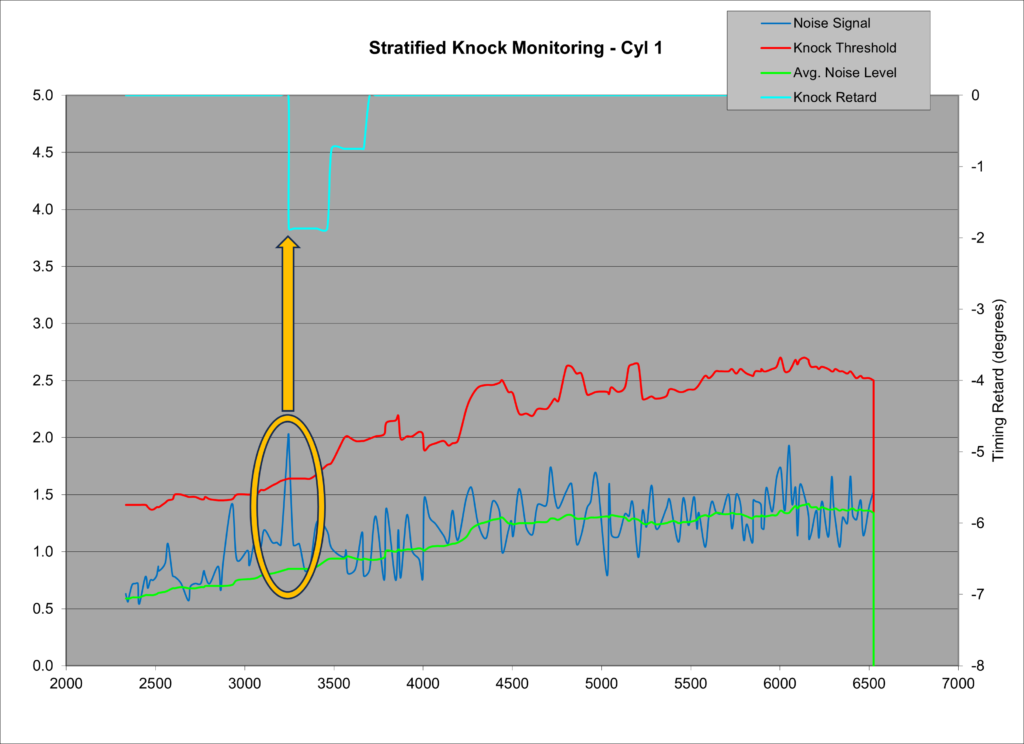
In this next example, a tune with the Knock Sensors “Numbed” is exposed to the same Noise Signal (Blue line) spike.
The difference in this case is the tuner has raised the Knock Threshold (Red line) so the ECU does not process this noise spike as a potential Knock Event and no safety measures are employed.
The Accessport reports zero (0) for the Ignition Timing Retard on cylinder #1 even though the same potential Knock Event has occurred as in the first example.
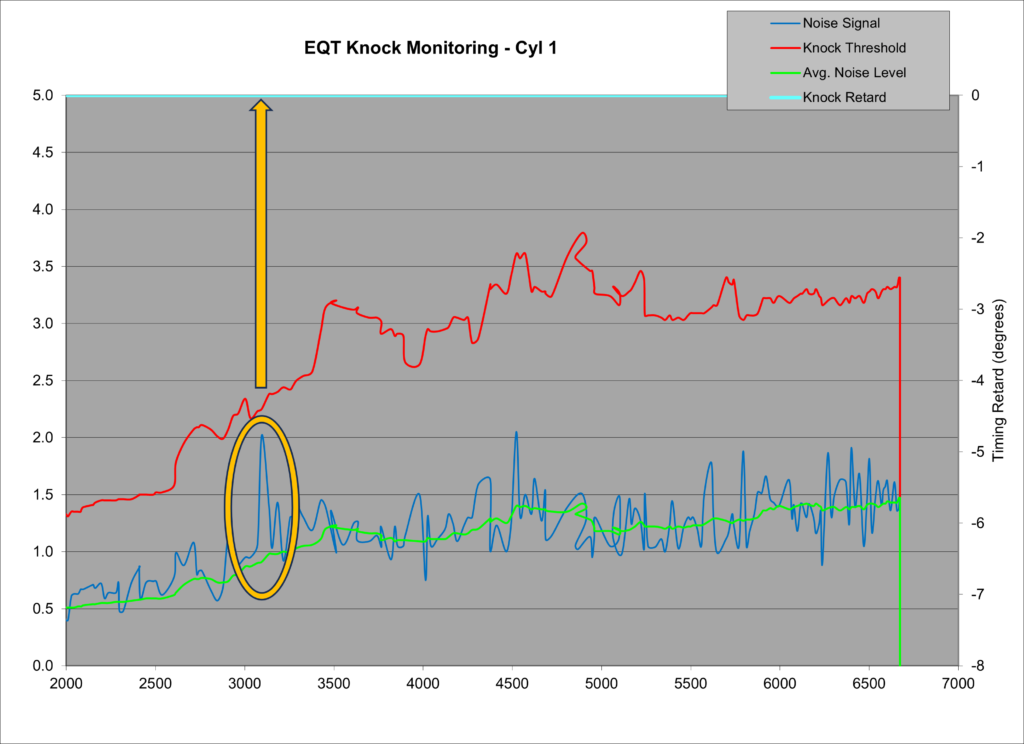
These examples illustrate why the Ignition Timing Retard value reported by the Accessport is of little value when aftermarket tunes are installed on an ECU.
Knock Sensor Numbing
In the next charts, the amount of Knock Sensor Numbing relative to the OEM values is shown. Higher percentages indicate a greater “numbing” of the Knock sensors compared to the OEM safety margins, increasing the probability of engine knock not being addressed by the ECU.


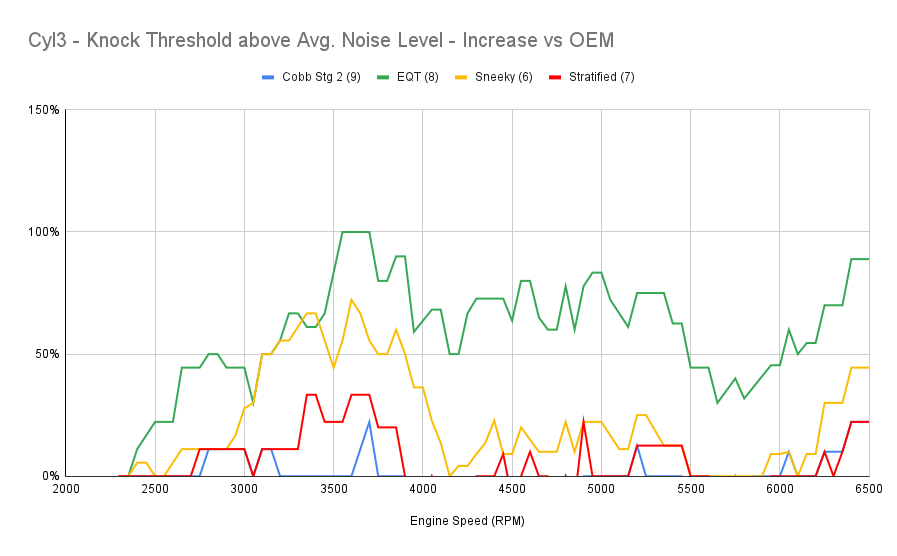
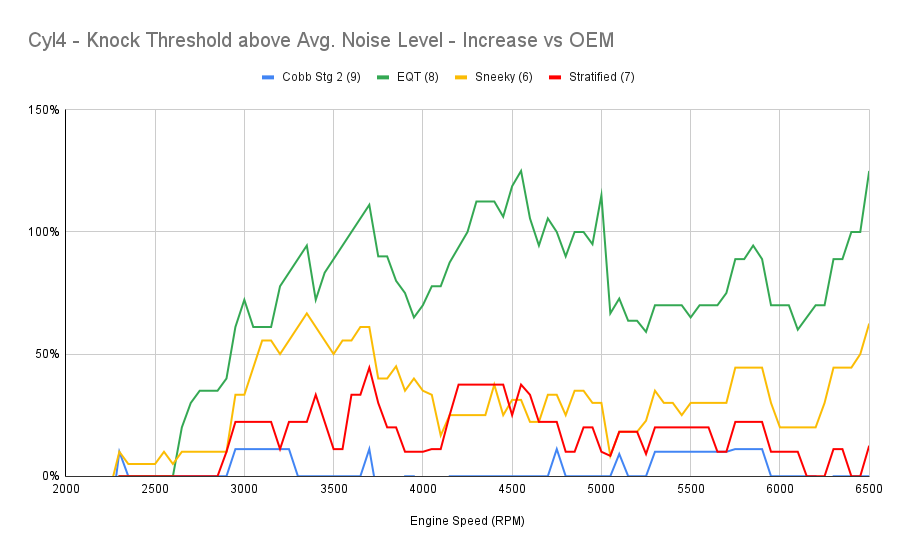
Detonation could destroy your engine in a matter of seconds… Detonation is bad juju, you don’t want to have any of that going on at all in your engine that’s driven rigorously like in Motorsports or even hooning around somewhere.
MotoIQ – 3 Ways to Prevent Your Engine from Blowing Up!
Intake Cam Position

Turbo Variables
The next chart shows the change in Oil Pressure during the third gear pull.
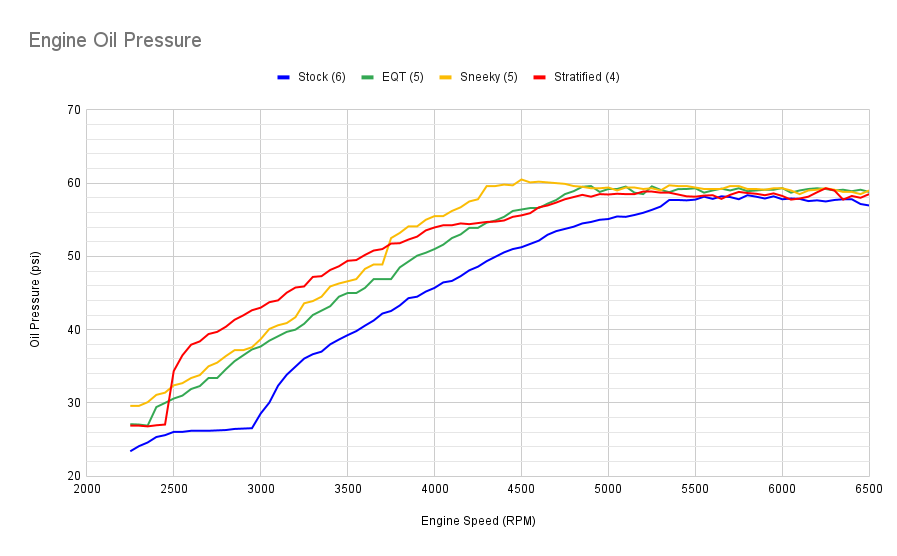
The next chart shows the average air temperature leaving the turbocharger during a third-gear pull.


